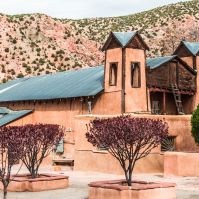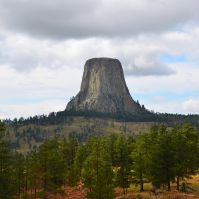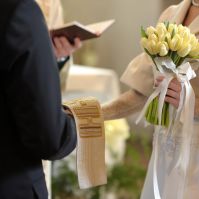![]() Halloween is a time for ghosts, goblins, and all things scary, right? Yes! But did you know that many scary things have their origins in religion and folklore?
Halloween is a time for ghosts, goblins, and all things scary, right? Yes! But did you know that many scary things have their origins in religion and folklore?
It’s true. Virtually all religions and cultures have their own scary creatures dating back to before recorded history. Here are just six otherworldly creatures (many more exist) for you to contemplate this Halloween.
1. Zombies
Zombies are the living dead, corpses that stagger around eating the flesh of the living. The idea of zombies originated with bokors, Haitian voodoo priests, who claimed that they could raise the dead and control them, forcing them to do the bokors’ bidding. “The Magic Island,” a 1929 book, brought the idea of zombies into popular culture, and the rest, as the saying goes, is history. Today zombies, whether as portrayed in the movies, on TV, or as Halloween costumes, are a large part of our culture.
2. Werewolves
A werewolf can be one of two things: a human being who has the power to shift into a wolf or a human/wolf hybrid. Either way, the idea of werewolves originated with the ancient Greek myth of Lycaon. According to the story, the god Zeus became angry with Lycaon and turned him into a wolf. A second ancient Greek myth, “The Epic of Gilgamesh,” an epic poem that many consider to be the earliest surviving work of great literature, tells the story of Gilgamesh, the mythical king of Uruk, a Sumerian city-state in Mesopotamia. One part of the poem recounts the story of a woman who turned one of her former lovers into a wolf.
3. Dybbuks
Dybbuks are evil spirits first discussed in Jewish mythology. Dybbuk means “to cling” in Hebrew, and according to the myth, dybbuks do indeed cling to and possess human beings. In essence, a dybbuk is the soul of a dead person. The idea of dybbuks goes back to 16th century Jewish writings, but dybbuks made their way into mainstream culture via such movies as “The Unborn” in 2009 and “The Possession” in 2012.
4. Vampires
While most people attribute the notion of vampires to Bram Stoker’s famous 1897 book “Dracula,” John Polidori, another English writer, wrote an even earlier book, “The Vampyre,” in 1819. Bela Lugosi then popularized vampires with his portrayal of Dracula in the 1931 movie of the same name. Actually, however, vampires have an even longer history in European folklore. Per Lugosi, et al, a vampire is a nocturnal human-looking creature who goes around sucking the blood out of human victims, usually nubile females, thereby turning them into vampires as well.
5. Headless Horsemen
The first appearance of a headless horseman occurs in “The Legend of Sleepy Hollow,” the gothic story of Ichabod Crane, written by American author Washington Irving and originally published in 1820. In the story, Ichabod, a superstitious schoolmaster, disconsolately rides his horse through a dark and mysterious swamp one night after failing to win the hand of his beloved. Suddenly another rider appears behind him, and Ichabod notices with horror that the man’s head is on his saddle, not his shoulders. Thoroughly terrified, Ichabod spurs his horse homeward, but the ghoul follows him, ultimately stopping at a magic bridge that Ichabod has already crossed. Unable to cross the bridge himself, the ghoul throws his head at Ichabod, hitting him. Ichabod is never seen or heard from again.
6. Banshees
Banshees come from Irish mythology. In the Old Irish language, banshee means “female fairy” or “female elf.” A banshee can take one of two appearances: a young maiden or an old hag. Either way, she appears in tattered red or green clothing and her hair is wildly unkept. The purpose of her visit is to foretell a death, which she does by wailing and screaming.
So whatever scary creatures you and your kids dress up as this Halloween, know that in all likelihood, you can thank religion for bringing them to the attention of the world.



